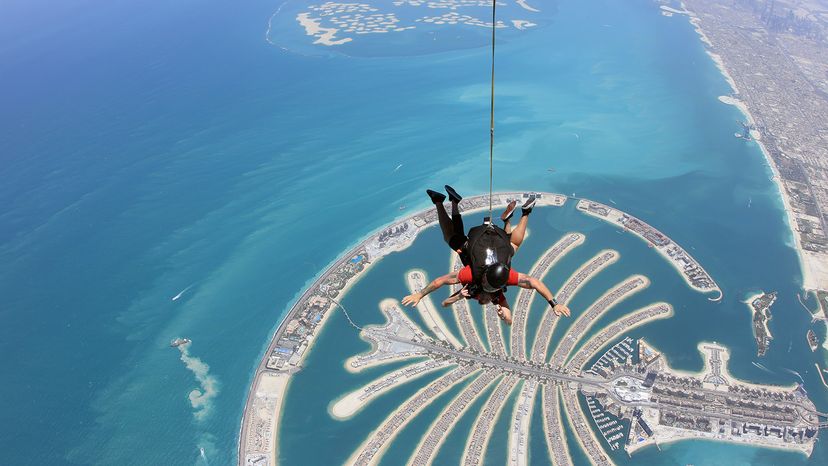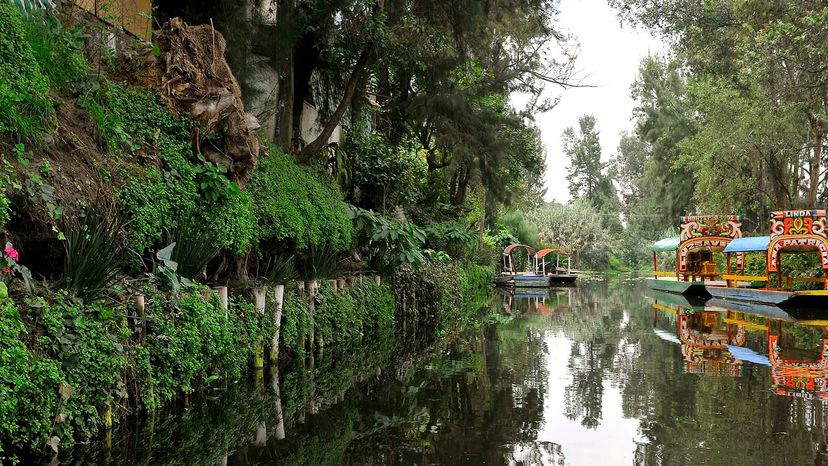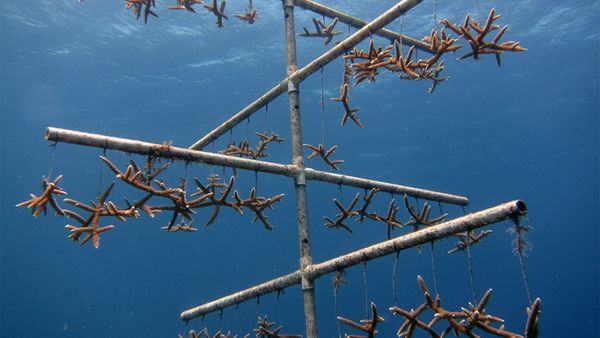Some artificial islands were conceived specifically with animal welfare in mind. Such was the case in the Markermeer, a 270-square-mile (700-square-kilometer) lake that was created in 1932 by walling off part of a saltwater bay on the coastal Netherlands. In the process, natural water currents were interrupted, resulting in a cloudy, silt-filled environment.
To clear up the water and attract wildlife, that pesky silt is being used to create a series of islets. The first of these was completed in 2016. Since then, the mini-islands have become popular rest stops for local swallows.
But man-made islands aren't always a boon for the ecosystem. "Both the dredging for materials and the [building process] can have severe ecological consequences," McManus says. "Silts and sands from coral reefs are particularly damaging to nearby marine life."
That's why biologists are getting worried about the South China Sea. From 2014 onward, China has been dredging up marine sediments and dumping them on live coral reefs in this area. The resultant islands are — to say the least — a bone of political contention.
According to McManus, most of the silts and sands naturally found by reefs "comes from the wearing down" of dead organisms like "corals, shelled animals, many species of seaweed, certain microorganisms and others." Individual grains often become pointed shards of leftover shells and skeletal material.
So when this stuff gets dredged, the sand particles "can kill almost any nearby life." When disturbed, the fine-grained sand creates lingering "clouds" in the water that block out sunlight. Furthermore, McManus warns that reef sands and silts "easily stick to breathing surfaces such as the gills of fish and many invertebrates," resulting in mass die-offs.
"In the case of the massive island-building by China in the South China Sea within the last decade ... roughly 15 million square meters [161 million square feet] of sensitive marine ecosystem was permanently destroyed," McManus says. Coral reefs break up waves during violent storms, protecting life and property in coastal areas. They also accommodate thousands of seagoing organisms, including many of the fish species that help sustain maritime economies.
On an overpopulated planet, the desire to build new lands is understandable. But experts warn that if we don't proceed with caution, coral reefs and other natural resources that we all depend on will find themselves at risk.




